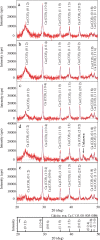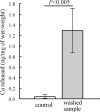An aluminum shield enables the amphipod Hirondellea gigas to inhabit deep-sea environments
- PMID: 30947320
- PMCID: PMC6449124
- DOI: 10.1371/journal.pone.0206710
An aluminum shield enables the amphipod Hirondellea gigas to inhabit deep-sea environments
Abstract
The amphipod Hirondellea gigas inhabits the deepest regions of the oceans in extreme high-pressure conditions. However, the mechanisms by which this amphipod adapts to its high-pressure environment remain unknown. In this study, we investigated the elemental content of the exoskeleton of H. gigas specimens captured from the deepest points of the Mariana Trench. The H. gigas exoskeleton contained aluminum, as well as a major amount of calcium carbonate. Unlike other (accumulated) metals, aluminum was distributed on the surface of the exoskeleton. To investigate how H. gigas obtains aluminum, we conducted a metabolome analysis and found that gluconic acid/gluconolactone was capable of extracting metals from the sediment under the habitat conditions of H. gigas. The extracted aluminum ions are transformed into the gel state of aluminum hydroxide in alkaline seawater, and this gel covers the body to protect the amphipod. This aluminum gel is a good material for adaptation to such high-pressure environments.
Conflict of interest statement
The authors have declared that no competing interests exist.
Figures







References
-
- Wüst G. The major deep-sea expeditions and research vessels 1873–1960: a contribution to the history of oceanography. Progress in Oceanography. 1964;2: 1–52.
-
- Jamieson AJ, Fujii T, Mayor DJ, Solan M, Priede IG. Hadal trenches: the ecology of the deepest places on Earth. Trends Ecol & Evol. 2010;25: 190–197. - PubMed
-
- Alan J. Chap. 9 Crustacea in Alan J editor The hadal zone: life in the deepest oceans. Cambridge Univ. Press; 2015. pp169–216.
-
- Eustace RM, Kilgallen NM, Lacey NC, Jamieson AJ. Population structure of the hadal amphipod Hirondellea gigas from the Izu-Bonin Trench (NW Pacific; 8173–9316 m). J Crust Biol. 2013;33: 793–801.
-
- Hessler RR, Ingram LC, Yayanos AA, Burnett RB. Scavenging amphipods from floor of the Philippine Trench. Deep Sea Res. 1978;25: 1029–1047.
Publication types
MeSH terms
Substances
LinkOut - more resources
Full Text Sources

